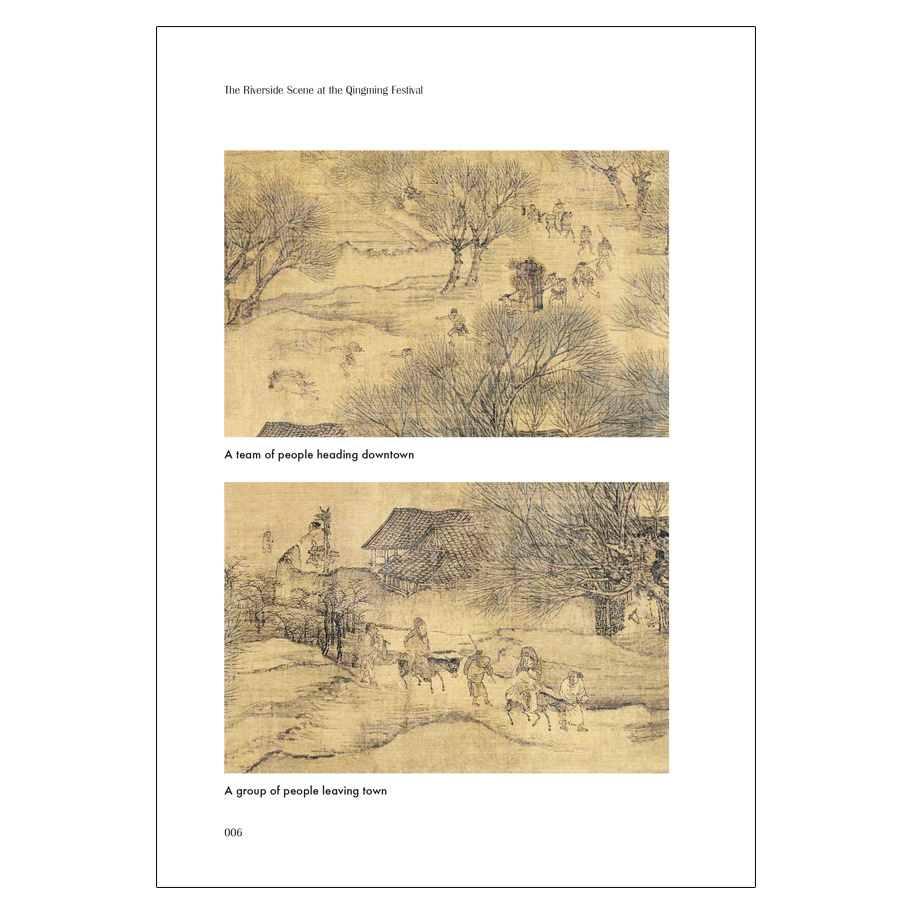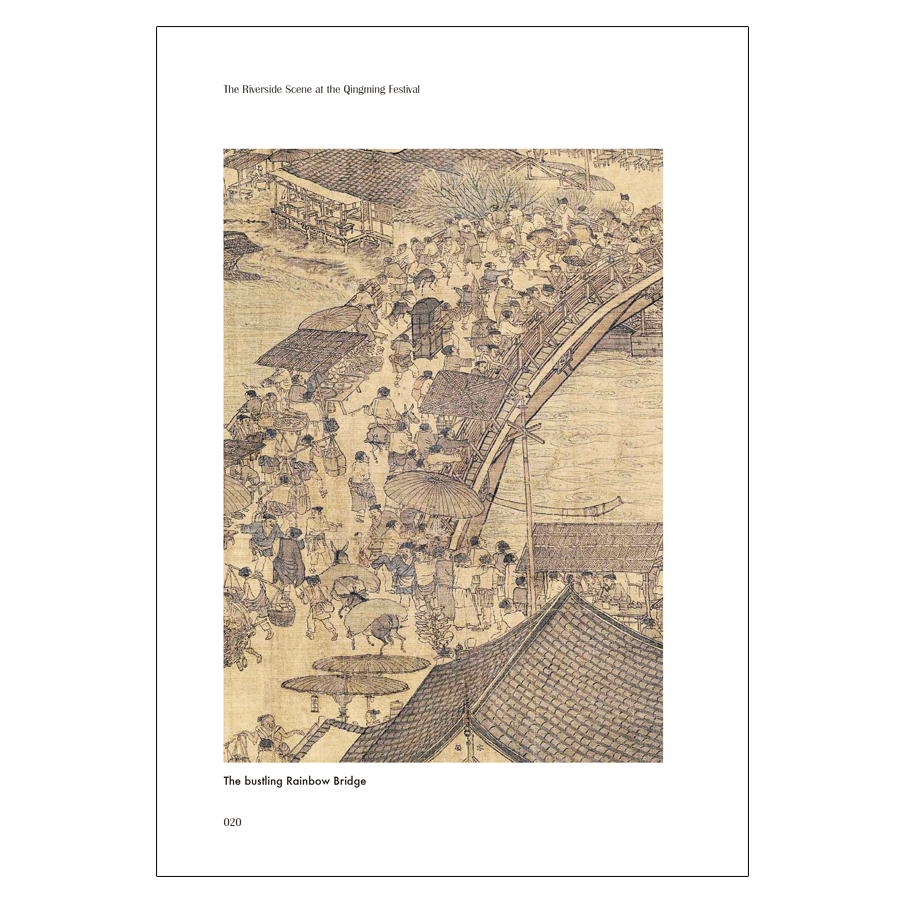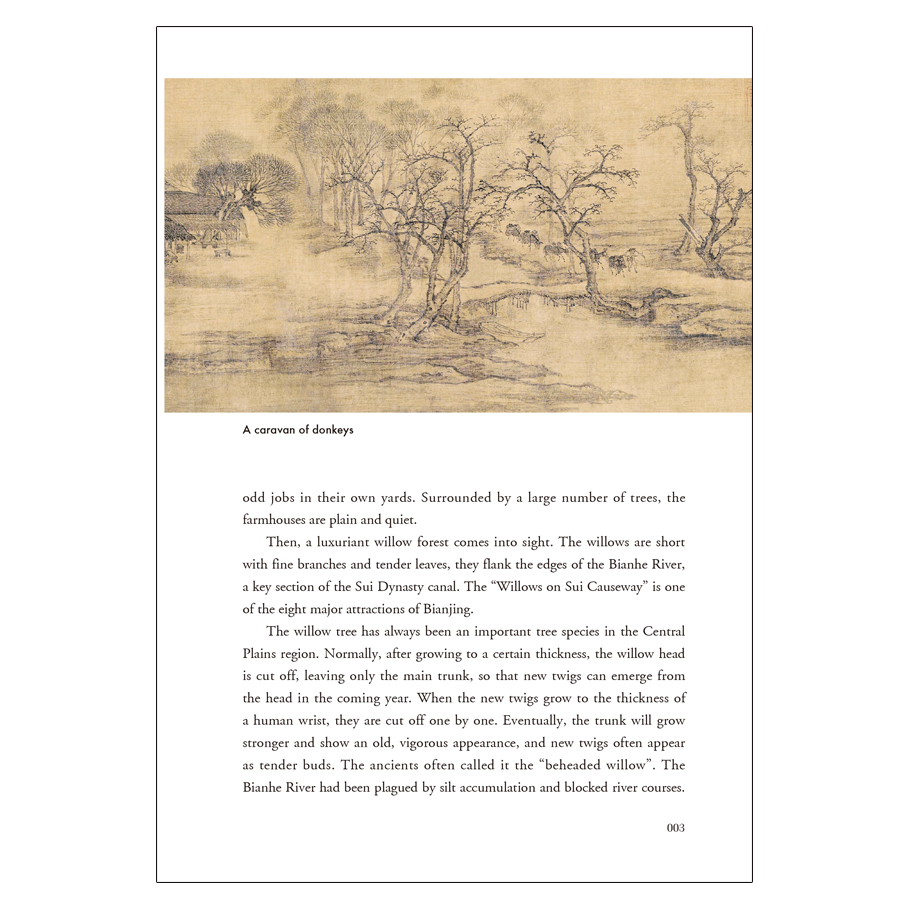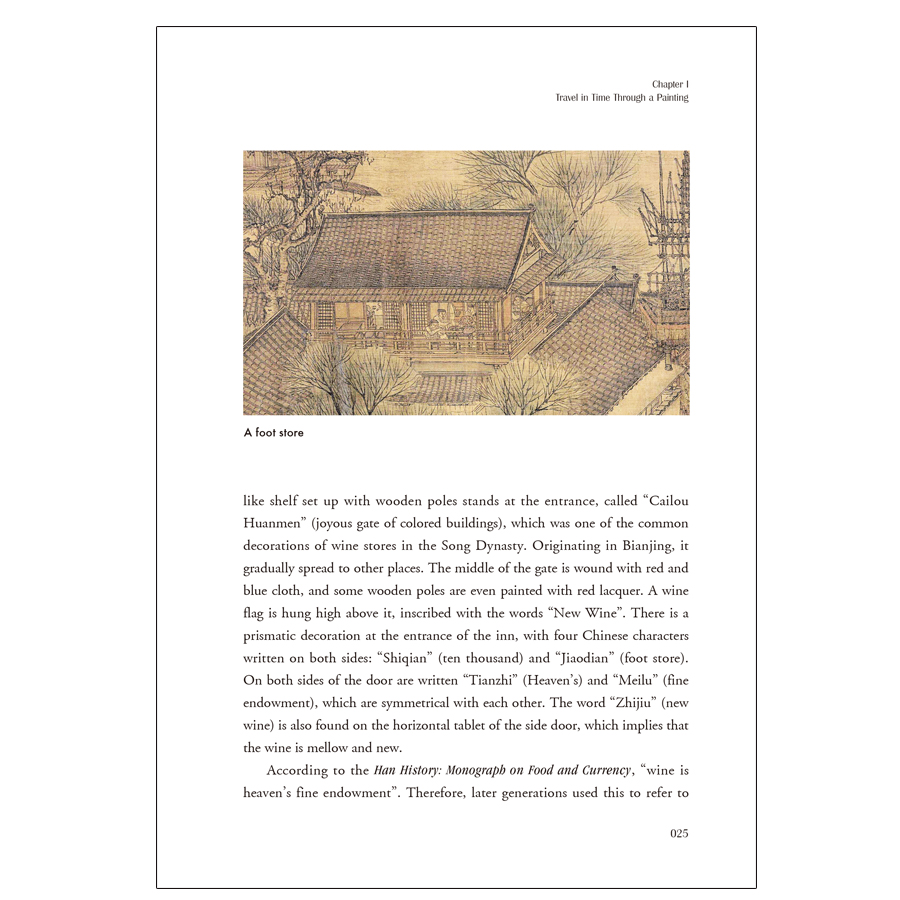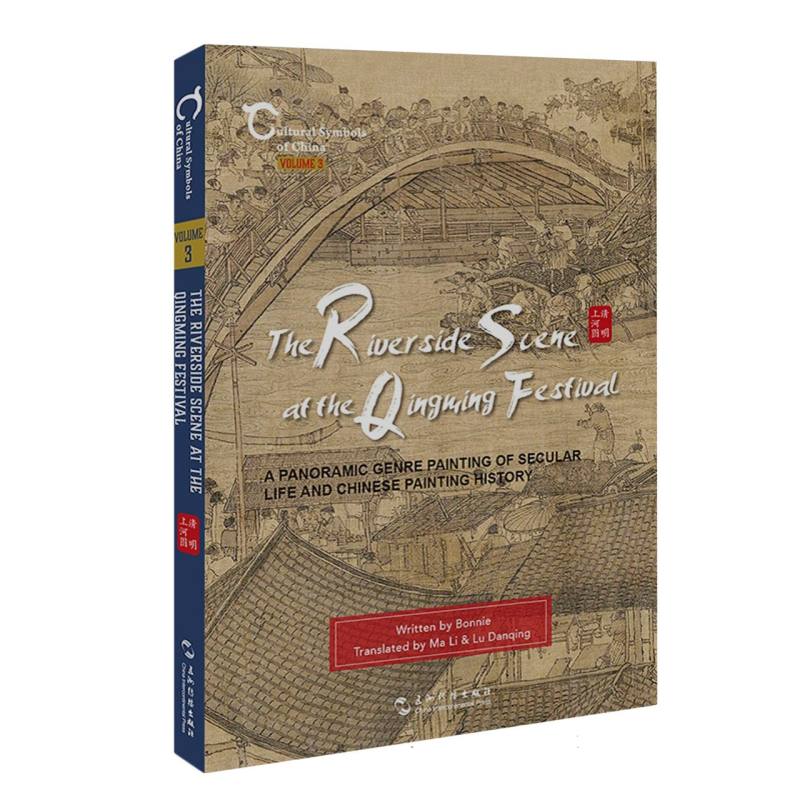
出版社: 五洲传播
原售价: 128.00
折扣价: 69.12
折扣购买: 中国人文标识系列:清明上河图风俗画里的中国绘画史(英)
ISBN: 9787508550565

邦妮,中央美术学院人文学院博士研究生,研究方向以中国美术史为主,发表文章涉及中国古代卷轴画、明代图像视觉文化研究等内容。目前主要关注的学术议题主要为宋元卷轴画与明清大众图像。 Bonnie, Ph.D. at the School of Humanities, Central Academy of Fine Arts. Her research interests are mainly in Chinese art history, and she has published articles on ancient Chinese scroll paintings and visual culture studies of Ming Dynasty images. At present, her major academic focus is on scroll paintings of the Song and Yuan dynasties and popular images of the Ming and Qing dynasties.
Postscript The Riverside Scene at the Qingming Festival led us to experience the prosperity of a time 800 years ago. Immersing ourselves in that image, we walked from the suburbs outside the city of Bianjing to the quiet countryside. We watched the flow of people, as they came to the Bianhe River wharf outside the city. We saw busy trade with ships shuttle and dock, load and unload goods. The characters are vivid and interesting. As we pass through the scene, our eyes gradually come to the central scene—Rainbow Bridge. The dramatic advance of the ship, the tense action of the crowd and the fine design of the bridge. It all bids us stop and enjoy. We continue along the Bianhe River, passing through busy shops, tall Joyous Gate, walking carts and horses. There is a cornucopia of characters, including camel teams and visitors from foreign lands. The scene visibly intensifies as we enter the inner city. The crowded streets clearly illustrate the prosperity and development of Bianjing as an international city. All of this urban splendor depended on the improvement of the urban system. Bianjing broke the Li-fang neighborhood system that had continued since the Sui and Tang Dynasties, thus stimulating the new vitality of this ancient city. Equally essential was, the water transport system with the capital city at its center. Continuous transports carried foods of every kind from all over the country to this international city. The rulers of northern Song Dynasty (960-1127) solved various problems in Bianjing and formed flexible policy to ensure the stability of life in this city. The historical status of Bianjing, the subject of the art, explains why some of the interest surrounding The Riverside Scene at the Qingming Festival. The Riverside Scene at the Qingming Festival is important for its artistic status as genre painting. This leads us to wonder why genre painting rose to prominence during the Song Dynasty. Pondering the rise of genre painting in the Song Dynasty, to the climax of its prosperity, and then to the reasons for the decline, we note the close correlation between social economy and culture. As the citizen class experienced an increase in prosperity, the favor of genre painting increased. This correlation in world history is not limited to China. The rise of 17th century Dutch genre painting correlates to a rise in citizen prosperity much like that of the Song Dynasty genre painting. The popularity of genre painting continued from the Song Dynasty, through the Ming and Qing Dynasties. In particular, the Qing Dynasty court produced a large number of genre painting works, including both scenes in the court and cities outside the palace. Over the course of history, The Riverside Scene at the Qingming Festival has turned the heads of many. Legends and anecdotes related to this genre paining, both brilliant and plain, emerged. Its influence gradually expanded from the Northern Song Dynasty to the Ming and Qing Dynasties, and to the whole circle of East Asian cultures. The Riverside Scene at the Qingming Festival has expanded our understanding of China, Japan, and North Korea. In the end, its charm conquered the world. Although the full historical puzzle of The Riverside Scene at the Qingming Festival has not been completely solved. Questions about the birth of this work of art cannot be separated from the history and development of Chinese painting. The Riverside Scene at the Qingming Festival is not only the cultural heritage of China, but also a historical treasure of the world.



